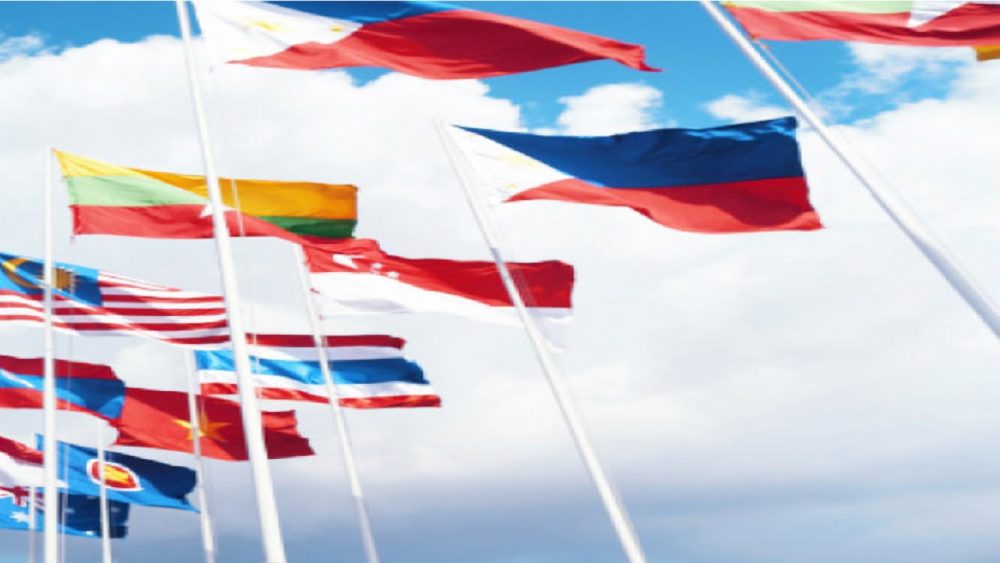Globalization continues to be a hot topic around the world and there can be no doubt that globalization is a thriving principle when it comes to franchising, or that it is shaping the growth of the franchise industry in Southeast Asia.
It is a fact that more franchise brands are now operating in Southeast Asia than ever before and that more brands than ever before are presently looking at the Southeast Asia as anarea of focus for their international expansion. This starts with regional brands looking to expand into their neighboring countries and then ripples out to East Asia, the Asia Pacific, the Indian Sub-Continent, the Middle East & Africa, Europe and across the Pacific to the Americas.
The reason for the increase in the number of franchise brands that have entered or are looking to enter the Southeast Asian region is twofold; – The 1st having to do with regional factors, including the increased ease of doing business in the region as a result of the economic integration by way ofthe ASEAN Economic Community (AEC) and the 2nd having more to do with broader global trends that are impacting the franchise industry.
In addition to the favorable intra-ASEAN trade policies resulting from the AEC the other the top 10 regional factors attracting franchise brands to Southeast Asia include:
1. Southeast Asia has a large and growing population with approximately 635.5 million people accounting for almost 9.0% of the world’s total population and with Indonesia, Philippines & Vietnam ranking in the world’s top 20 in total population.
2. Southeast Asia had an estimated GDP Growth of 4.7% in 2016 and has a combined GDP of approx. US$2.4 trillion. If ASEAN were a single entity it would rank as the 8th largest economy in the world.
3. Southeast Asia has seen a measurable increase in GDP Per Capita over the last decade and the average GDP Per Capita now stands at approximately $US3.9K, although the gap between Singapore with the highest GDP Per Capita and Cambodia with the lowest remains significant.
4. Southeast Asia has a young urban population. 8 SEA countries have a median age below the world average and 35% of the total population in the region is below 19 years old. Additionally, more than 40% of the population is living in urban areas with SEA having 3 of the world’s largest cities in Bangkok; Jakarta & Manila.
5. The Southeast Asia has seen sustained improvements in employment rates with 9 of the SEA counties having unemployment rates below 5% and sustained improvements in adult literacy rates and the availability of affordable and productive workforce and increased availability of skilled talent make operating franchises in the Southeast Asia attractive.
6. The services sector has become a main driver for growth in SEA as countries have shifted away from an agricultural driven economy. The service sector now accounts for the highest share of GDP in 8 of the SEA countries exceeding 50% of GDP in Singapore, Malaysia and the Philippines.
7. The Southeast Asia has generally seen positive inflation trends in recent years with 7 of 10 ASEAN countries maintaining inflation rates below 5%.
8. 6 of the Southeast Asian countries including Singapore, Indonesia, Vietnam, Malaysia, Philippines & Thailand have all been identified as the top 20 countries to franchise worldwide based on a composite index of factors including projected GDP, market size, legal concerns, ease of market entry, ease of business establishment and assessment of political risks.
9. Several SEA countries including Singapore, Malaysia, Thailand, Indonesia & the Philippines have well developed franchise industries including a proliferation of both foreign & home-grown brands. Vietnam and Cambodia are also seeing an influx of international franchises and more recently international brands areturning their attention to Myanmar as well.
10. Southeast Asia’s positive and sustained economic grow coupled with a young, large and fast growing urban middle class with increased spending power with higher standards and expectations is contributing to the rapid development of modern retail across the region including malls, shopping centers, etc.
Broader global franchise trends are another factor driving brands to focus on Southeast Asia as a priority for international expansion. A few of those trends include 1) The move towards specialization in franchising; 2) The growth of the fast-casual franchise segment; 3) The growth of child related franchises; 4) The increased focus on non-food franchises including specialized fitness brands; and 5) The emergence of the mobile franchise in both the F&B and services segment of the industry.
While these global franchise trends took root in developed franchise markets such as the USA, UK and Australia the same trends are starting to emerge in Southeast Asia driven by the socio economic factors detailed above and fueled by the continued emergence of an affluent, educated and informed middle class across the region.
The franchise sectors that have been identified as having the biggest potential in Southeast Asia include F &B, Education & Training, Business Services & Retail.
North American F&B Brands such as Little Caesars, the third largest pizza chain in the world with its unique operating platform called Hot-N-Ready is prioritizing Southeast Asia for development in 2018. Additionally,the Earlenterprises Group that owns Planet Hollywood, Buca di Beppo and Earl of Sandwich openedits first Buca di Beppo outlet in the Philippines in 2017 with plans to open Planet Hollywood and Earl of Sandwich in Manila this year and is looking to develop all 3 of their brands across the region over the next 3 years.
North America service brands are also prioritizing Southeast Asia for development including fitness brands Snap Fitness, 9Round and Cyclebar, all of whom are leaders in their respective segments of the US fitness industry and Hollywood based Millennium Dance Complex, the world’s most famous dance studio. Snap Fitness identified a Master Franchisee for Indonesia in 2017 and 9Round will be entering Malaysia this year. Dallas based FastSigns the world leader in visual business communications is also actively seeking franchisees across ASEAN.
Given the proximity of Australia and New Zealand, Southeast Asia is often considered as a first port of call for brands from these countries as they look at international expansion and there are several Australian F&B Brands currently looking for partners in the region. These include FUNK Coffee from Adelaide, Sydney based Mad Mex which was ranked as one of Australia’s top 10 franchises by Business Review Australia in 2016 and Cuban themed café Coco Cubano also from Sydney.Craveable brands the largest QSR chicken operator in Australia with a stable of 3 iconic brands including Red Rooster, Oporto and Chicken Treat is also prioritizing Southeast Asia. Also, from Australia comes Begin Bright, Australia’s leading School Readiness and Primary Tutoring franchise seeking franchisees across the region.
Catering to the fast-growing healthy options segment of the F&B industry there is Habitual Fix from Auckland, New Zealand which has developed a model that delivers on their promise of offering good food, fast. Both these brands are looking to expand across ASEAN through franchising in 2017.
There has been a proliferation of Japanese and Korean F&B brands entering Southeast Asia over the past 5 years and established brands from East Asia and the Indian Sub-Continent are also starting to look at ASEAN as an attractive market for international expansion. Examples of Indian brands looking to expand in this region include Panchavati Gaurav which is India’s largest chain of pure vegetarian Thali restaurants, Jetking, India’s leading digital skills training institute, a 70 year old company with almost 100 learning centres that has trained more than 700,000 students and Dr. Batra’s the World’s largest chain of homeopathy clinics with 225 clinics in 115 cities and 4 countries.
The F&B segment of the franchise industry has been growing steadily in the GCC and across the broader Middle East region. Now, several brands from that region are turning their attention to Southeast Asia, many with specific focus on Malaysia, Indonesia and Brunei. One such example is 150 year old oriental perfume specialist Abdul Samad Al Qurashi, based in Mecca in the Kingdom of Saudi Arabia, which concluded a 4 country master franchise for Malaysia, Indonesia, Singapore and Brunei in 2017i. Kuwait based Let’s Popcorn is also looking for franchisees and distributors across Southeast Asia having successfully expanded to its neighboring countries in the GCC region.
While perhaps not as active in capitalizing on ASEAN franchise opportunities as brands from some of the other regions there are also a number of European brands exploring expansion opportunities in the region,including brands from the UK, France, Spain, Germany, Portugal and other markets.
With brands from all over the world looking at expansion opportunities across the Southeast Asia, there is an unprecedented number and variety of franchises available to investors from the region looking to add to an existing brand portfolio or diversify an existing business via investing in a franchise and this represents a positive development for the region and the franchise industry as a whole.








Comments are closed.